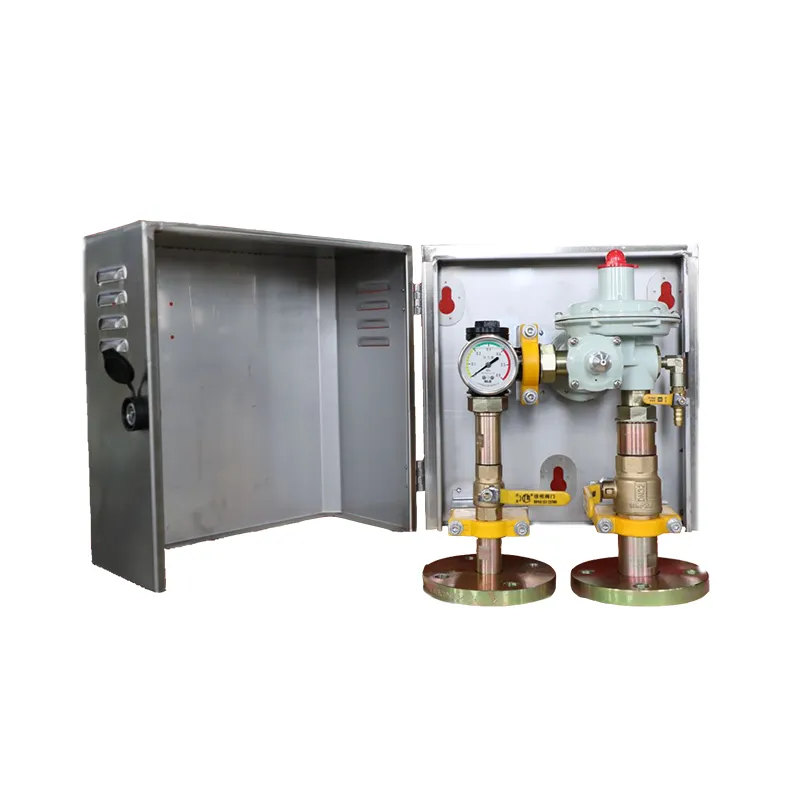
Nov . 14, 2024 03:59
Back to list
صمام تنظيم ضغط الغاز
Regulating Gas Pressure Understanding Gas Pressure Regulators
Gas pressure regulation is a critical aspect in various industries, from residential heating systems to gas-powered appliances and industrial processes. One of the essential components in achieving optimal gas flow and safety is the gas pressure regulator. This article delves into the significance, functioning, and types of gas pressure regulators.
What is a Gas Pressure Regulator?
A gas pressure regulator is a mechanical device designed to control the pressure of gas coming from a supply source, such as a gas line or tank, before it reaches the end user’s equipment. The primary function of the regulator is to convert high-pressure gas into a lower, more manageable pressure while maintaining a steady flow rate. By doing so, it ensures the safe and efficient operation of devices that depend on gas, such as heating systems, ovens, and generators.
How Do Gas Pressure Regulators Work?
.
1. Inlet Pressure This is the pressure of the gas as it enters the regulator from the supply line. 2. Diaphragm The diaphragm is a flexible membrane that reacts to changes in pressure. When the inlet pressure increases, the diaphragm moves to reduce the flow or close the regulator, thereby lowering the output pressure. 3. Spring Mechanism A spring applies force on the diaphragm, allowing the regulator to balance the inlet pressure and maintain the desired outlet pressure. 4. Outlet Pressure This is the pressure of the gas delivered to the end-use appliances, which should remain constant to ensure their proper functioning.
صمام تنظيم ضغط الغاز

As the demand for gas increases or decreases, the regulator continuously adjusts the gas flow to maintain a stable outlet pressure. This dynamic adjustment is what makes gas pressure regulators indispensable for safety and efficiency.
Types of Gas Pressure Regulators
Gas pressure regulators come in various designs, tailored for specific applications. Some common types include
1. Single-Stage Regulators Used for general applications, these regulators provide a straightforward pressure reduction in a single step. They are ideal for low-pressure systems. 2. Two-Stage Regulators These regulators offer higher precision and stability. They reduce the high inlet pressure in two stages, ensuring more consistent output pressure, making them suitable for applications with varying gas demands. 3. Automatic-Reset Regulators These regulators feature mechanisms that automatically adjust the outlet pressure based on the flow and pressure changes within the system. They are particularly useful in industrial applications where fluctuations may occur.
4. Lock-Up Regulators Designed to maintain a specific outlet pressure, these regulators prevent over-pressurization by shutting off the flow when the set pressure is exceeded.
Conclusion
The importance of gas pressure regulators cannot be overstated. They play a vital role in ensuring safety, efficiency, and reliability in gas-powered systems. By understanding how these devices work and the different types available, users can make informed decisions about their gas systems, ensuring they operate optimally while minimizing risks. As technology continues to evolve, innovations in gas pressure regulation promise even greater safety and efficiency in the future.
Next:
Latest news
-
Safety Valve Spring-Loaded Design Overpressure ProtectionNewsJul.25,2025
-
Precision Voltage Regulator AC5 Accuracy Grade PerformanceNewsJul.25,2025
-
Natural Gas Pressure Regulating Skid Industrial Pipeline ApplicationsNewsJul.25,2025
-
Natural Gas Filter Stainless Steel Mesh Element DesignNewsJul.25,2025
-
Gas Pressure Regulator Valve Direct-Acting Spring-Loaded DesignNewsJul.25,2025
-
Decompression Equipment Multi-Stage Heat Exchange System DesignNewsJul.25,2025

